2021

The Technology, Business, and Economics of Streaming Video: The Next Generation of Media Emerges
This book covers the next generation of TV—streaming online video, with details about its present and a broad perspective on the future. It reviews the new technical elements that are emerging, both in hardware and software, their long-term trend, and the implications. It discusses the emerging ‘media cloud’ of video and infrastructure platforms, and the organizational form of such TV.

The Content, Impact, and Regulation of Streaming Video: The Next Generation of Media Emerges
This book examines the next generation of TV—online video. It reviews the elements that lead to online platforms and video clouds and analyzes the software and hardware elements of content creation and interaction, and how these elements lead to different styles of video content.
2019

Offers a primer for students in Media, Communications, Information, and Business. Applies elements of a basic MBA curriculum to media management at a level that is clear, comprehensive, and appropriate for students in all fields. Utilizes case studies, models, and overviews to offer an entire basic management capstone course in one textbook

Managing Media and Digital Organizations
Applies dimensions of the MBA curriculum directly relevant to the entirety of the media and digital sector. Provides a comprehensive view of the functions of management across the media, communications, and information sector. Utilizes case studies, models, and overviews to offer an entire MBA capstone course in one textbook
2018
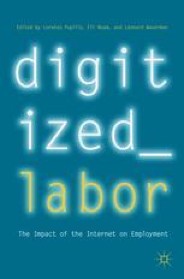
Digitized Labor: The Impact of the Internet on Employment
Includes contributions from academics, professionals, and policy-thinkers alike. Offers insights from theoretical and empirical studies with a focus on Europe, the USA, Canada, and Asia in one cohesive text. Discusses the internet’s role in shaping labor, its effect on income distribution, and its implications for economic policy

The Telecommunications Revolution: Past, Present, and Future
Originally published in 1992 this book charts the global restructuring of telecommunications industries away from the monopoly structures of the past towards increased competition, deregulation and privatization. The book’s authors are international policy-makers and scholars, who examine the regulatory environment within a theoretical and historical context. The book looks at the roots of regulatory and legislative changes by discussing individually the countries at the forefront of the revolution: the UK, France, Germany, Japan and the United States. It examines the impact of new technology for consequences of change in trade and government policies.
2016

Who Owns the World’s Media? Media Concentration and Ownership around the World
Who Owns the World’s Media? moves beyond the rhetoric of free media and free markets to provide a dispassionate and data-driven analysis of global media ownership trends and their drivers. Based on an extensive data collection effort from scholars around the world, the book covers thirteen media industries, including television, newspapers, book publishing, film, search engines, ISPs, wireless telecommunication and others, across a ten to twenty-five year period in thirty countries. In many countries–like Egypt, China, or Russia–little to no data exists and the publication of these chapters will become authoritative resources on the subject in those regions.
2014

Broadband as a Video Platform Strategies for Africa
Highlights strategies for development in Sub-Saharan Africa through information and communication technologies, with implications for other emerging markets. Features contributions from scholars, industry leaders and policymakers from many spheres, including economic development, education, management and regulation. Considers the institutional, commercial, financial context in which platforms and technologies converge
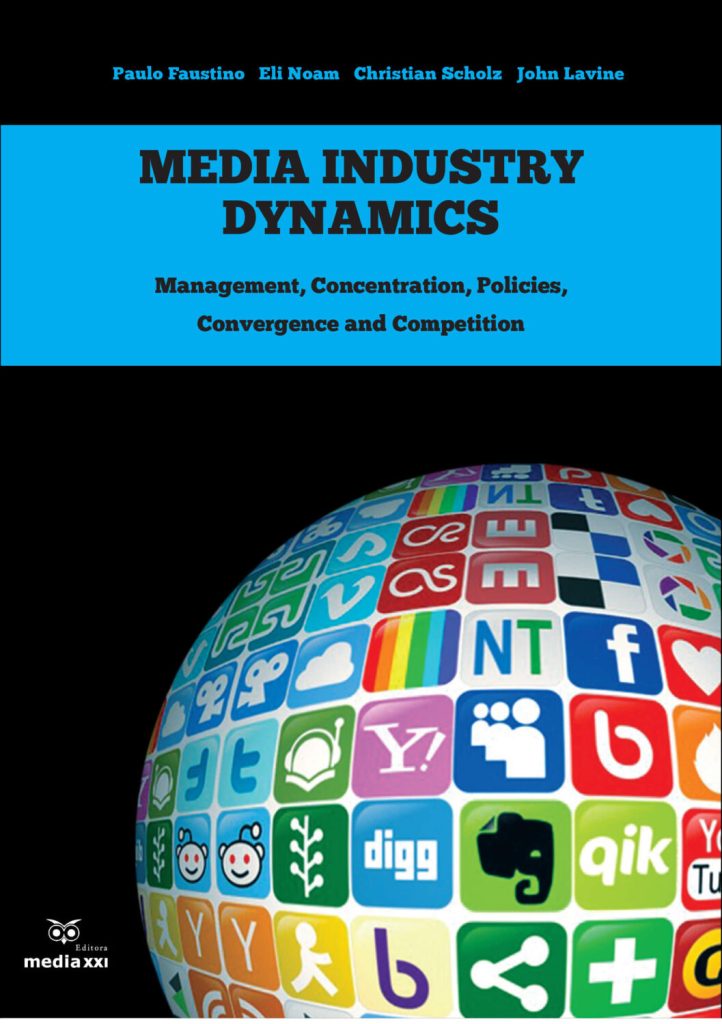
In the last 20 years there has been considerable discussion about the transformation of the media industry and its relation with telecommunications, bringing these industries closer and making them more convergent – mostly in terms of content management and distribution.
The media industry is going through a period of accelerated transformation and is characterized by a radical disruption. This obviously has profound effects on management strategies and practices within and across media companies and industries. It is equally clear, however, that among media industries we find divergent characteristics that recommend practices and strategies for responding to the specificities of diverse media companies and kinds of products.
This book presents diverse and high quality articles on topics related to Economics and Management of Media and Creative Industries, from their specific features as an industry based on intensive human capital, to changes in business models, impacts of the Internet and influence of public policies, as well as other practices in terms of the sector’s concentration and regulation. The book is organized in two parts – “Media Concentration, Competition and Convergence” and “Media Management Strategies, Business Models and Cultural Industries”.
2013

Broadband Networks, Smart Grids and Climate Change
Investigates the convergence of energy and information and communication technologies. Addresses the role of ICT in mitigating climate change. Looks at the interdependence between broadband network and smart grids, and the environmental impacts of smart grids/broadband networks?
2009

Media Ownership and Concentration in America
People have worried for many years about the concentration of private power over the media, as evidenced by controversy over Federal Communication Commission rulings on broadcast ownership limits. The fear, it seems, is of a media mogul with a political agenda: a new William Randolph Hearst who could help start wars or run for political office using the power of the media. In the light of these concerns about freedom of speech, Eli Noam provides a comprehensive survey of media concentration in America, covering everything from the early media empire of Benjamin Franklin to the modern-day cellular phone industry.
2008

Peer-to-Peer Video: The Economics, Policy, and Culture of Today’s New Mass Medium
P2P video is at the nexus of technology, media, culture, politics, economics, law, and business today. First comprehensive treatment of the topic: coverage from multiple points of view, with numerous contemporary examples. Combines incisive analysis with discussion of practical implications for business, media/communications management, and intellectual property law. Expert contributors on the front lines, including prominent academics, consultants, and practitioners from the U.S. and abroad
2006

Mobile Media: Content and Services for Wireless Communications
The proliferation of mobile media in recent years is an international phenomenon, with billions of devices sold annually. Mobile communications are now moving beyond individualized voice to mass media content–text, voice, sound, images, and even video. This will create new types of content that allow media companies and users to interact in new ways. There is a strong interest from the media and telecom industries in what manner of applications and content can be distributed in that fashion, and at what cost. To answer these questions, the book provides 18 chapters from internationally renowned authors. They identify likely types of content such as news, entertainment, peer-to-peer, and location-specific information; evaluate the economics, business models, and payment mechanisms necessary to support these media; and cover policy dimensions such as copyright, competitiveness, and access rights for content providers.
This volume takes the reader through the various elements that need to be considered in the development of third generation (3G) content, and explains pitfalls and barriers. The result is a volume of interest to business professionals, academics, and policy makers.
2005
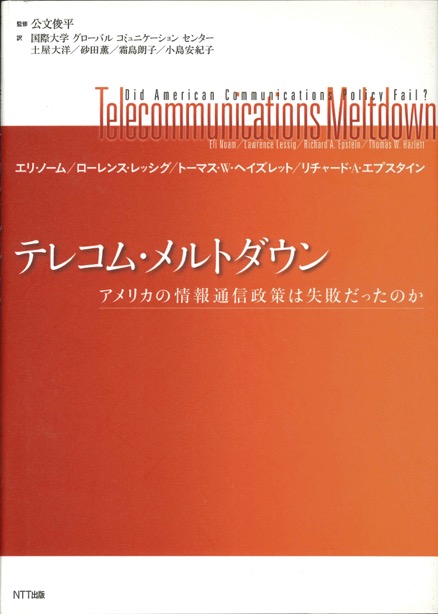
The Telecommunications Meltdown (in Japanese)
2004

Internet TV is the quintessential digital convergence medium, linking television, telecommunications, the Internet, computer applications, games, and more. Soon, venturing beyond the convenience of viewer choice and control, Internet TV will enable and encourage new types of entertainment, education, and games that take advantage of the Internet’s interactive capabilities. What Internet TV is today and can be in the future forms the context for this book.
2003

Competition for the Mobile Internet
Billions of dollars have been spent by wireless services providers to acquire the radio frequency spectrum needed to offer mobile services. These services include high-speed data, mobile Internet access and entertainment such as games, music and video programs. Indeed, as voice communications are substituted by data communications, software -rather than terminals or networks- has become the driver of the wireless industry. Meanwhile, services are becoming increasingly specialized.
Why has the road to multimedia cellular been so difficult? These benefits of the mobile Internet have come with the costs of a massive transition that has coincided with the bust of stock markets and the technology segments worldwide, controversial and costly license auctions in several lead markets, dated or mistaken regulatory policies, the clash between the early hype and the pioneering realities of the mobile Internet. But these are generalities that barely scratch the surface. The devil is in the details. And it is these details that Competition for the Mobile Internet addresses.
2001
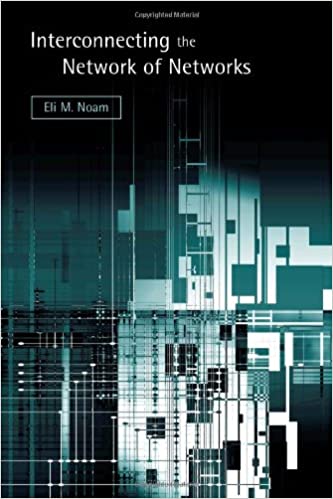
Interconnecting the Network of Networks
This book describes the transformation of telecommunications from national network monopolies to a new system, the “network of networks,” and the glue that holds it together, interconnection. By their very nature, monopoly-owned networks provided a small number of standardized, nationwide services. Over the past two decades, however, new forces in the world economy began to unravel this traditional system. The driving force behind the change was the shift toward an information-based economy. Especially for large organizations, the price, control, security, and reliability of telecommunications became variables requiring organized attention. Thus, monopoly began to give way to the “network of networks,” the foundation of today’s telecommunications and Internet infrastructure.
1999

In Europe, television began in a public format and public broadcasting defined the medium. But in America, public television was created to fill the programming void left by commercial TV, and has been tolerated as a belated addition rather than as an equal. For decades commercial television was controlled by three networks–ABC, NBC, and CBS–the economic imperative of which led toward entertainment. Education, by default, was served by public television, always the weaker part of the broadcast system in terms of resources and audience. Money was only part of the problem; the other was organization and vision. During the 1980s, cable television expanded rapidly, and with it, private cable channels. Public TV largely missed out on the opportunity to enter the era of multichannel television.
This book examines public television today, as it stands at a major crossroad. Technologically, digitalization, multicasting, and the Internet provide a new challenge. Institutionally, the structure of the entire system is under scrutiny. And finally, its long-term funding mechanism is less certain than ever before.

The New Investment Theory of Real Options and its Implication for Telecommunications Economics
The issue of costing and pricing in the telecommunications industry has been hotly debated for the last twenty years. Indeed, we are still wrestling today over the cost of the local exchange for access by interexchange and competitive local ex change carriers, as well as for universal service funding. The U.S. telecommunications world was a simple one before the emergence of competition, comprising only AT&T and independent local exchange carriers. Costs were allocated between intrastate and interstate jurisdictions and then again, between intrastate local and toll. The Bell System then divided those costs among itself (using a process referred to as the division of revenues) and independents (using a process called settlements). Tolls subsidized local calls to keep the politi cians happy, and the firm, as a whole, covered its costs and made a fair return. State regulators, however, lacked the wherewithal to audit this process. Their con cerns centered generally on whether local rates, irrespective of costs, were at a po litically acceptable level. Although federal regulators were better able to determine the reasonableness of the process and the resulting costs, they adopted an approach of “continuous surveillance” where, like the state regulator, the appearance of rea sonableness was what mattered. With the advent of competition, this historical costing predicate had to change. The Bell System, as well as the independents, were suddenly held accountable.
1998
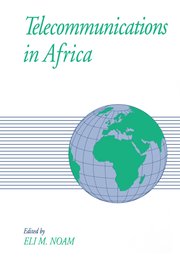
Telecommunications is becoming an essential infrastructure in the global economy. The electronic flow of information around the world favors those nations that have invested in the technology to participate in this international commerce. This book provides a comprehensive view of what individual African countries are doing to build a telecommunications capability. Special attention is paid to telecommunications as a link in the chain of the regional development process.
1997
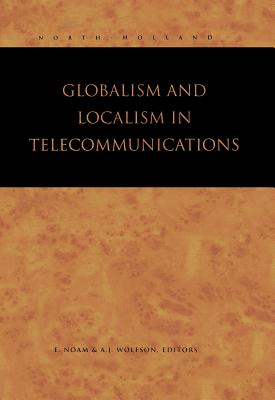
Globalism and Localism in Telecommunications
The telecommunications industry is being transformed by contradictory forces: on the one hand, the trend toward global expansion by carriers, and on the other hand, fragmentation and entry in local communications. These transformations represent two sides of the same issue: a blurring of market boundaries created through technical innovation, policy liberalization, user initiatives and entrepreneurialism. The result is a complex web of overlapping network definitions, product and service markets, carrier types, technical standards, government policies, financial arrangements, and cooperative ventures. This volume discusses the complexities of these bi-polar forces and maps out the policy issues which need to be addressed today and in the future.
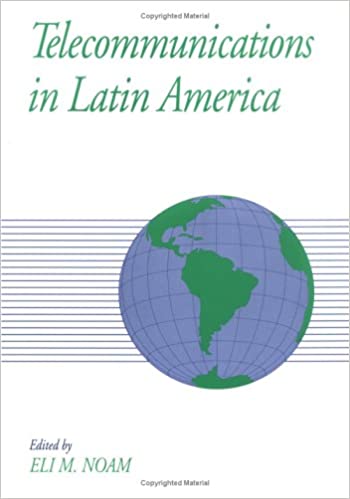
Telecommunications in Latin America
This book provides a comprehensive view of what individual Latin American countries are doing to build a telecommunications capability. It addresses the complicated economic and policy issues of each nation’s telecommunications. Underlying the book is the theme that
telecommunications is an essential infrastructure necessary for successful economic development. This work will appeal to students and professors of telecommunications, international telecommunications companies, and country governments in Latin America.
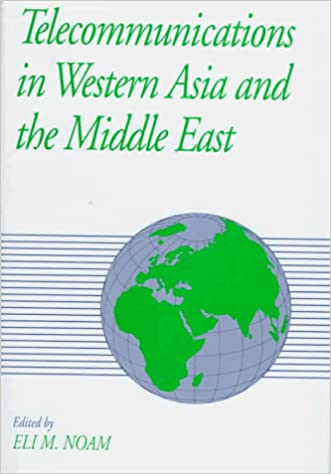
Telecommunications in Western Asia and the Middle East
Bringing together experts on such countries as Bahrain, India, Iran, Israel, Jordan, Nepal, Pakistan, Sri Lanka, Saudi Arabia, Turkey, and the Yemen Arab Republic, this book provides a comprehensive view of what each individual country is doing to build a telecommunications capability. The
contributors also address the complicated economic and policy issues of each country’s telecommunications. The editor, Eli Noam, is an internationally known authority on telecommunications, and this book is the latest in a group of similar works that survey telecommunications in major regions of the
world. This work will appeal to students and professors of telecommunications, international telecommunications companies, and country governments in Western Asia.
1996

Cyber-TV: Thesen Zur Dritten Fernsehrevolution (Cyber-TV: Theses for the Third TV Revolution)
The world is experiencing a transition from industry to information society. This has deep consequences. In this volume, Professor Eli M. Noam outlines his vision for the future of television. He critiques the current political discussion, which is unprepared for this development, and describes the path from license-dependent broadcasting via multi-channel television to Cyber-TV. He analyzes possible consequences of the forthcoming third television revolution for the media market, for program content, and for society.
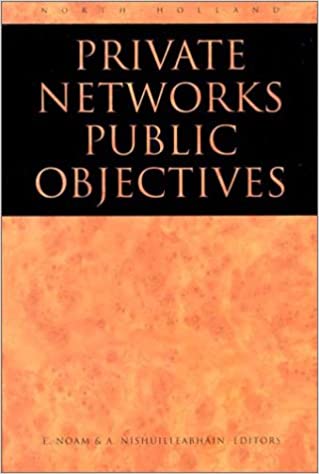
Private Networks and Public Objectives
The aim of this volume is to: model and explain the reason for various networking arrangements – public, private, hybrid, group, intra-organizational, virtual etc.; project the evolution of the telecommunications network into a pluralistic federation of subnetworks; analyze the economics of private networks, and the technological options and network configurations available to providers both of public and private capacity; examine the policy implications of use-privatization for social objectives traditionally incorporated in public networks, such as technical compatibility; universal service; common carriage; privacy; consumer protection; service quality; urban/rural service similarity; and ability to fashion national and international policies. Through its various contributors, this volume addresses the future of telecommunications and information systems, and the maintenance of traditional public objectives within the emerging network of networks.
1994
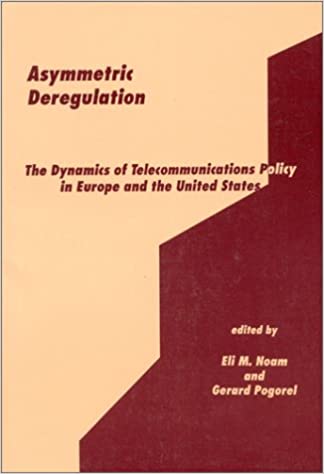
Asymmetric Deregulation: The Dynamics of Telecommunications Policy in Europe and the United States
For almost a century, a relatively smooth cooperation characterized transatlantic communication; problems mostly involved technical compatibility and were resolved by technologists of the monopolistic telephone organizations on either side of the Atlantic. In recent years, however, the nature of international communications, its institutions, and its collaborative arrangements have radically changed. There now exists a great variety in the patterns of ownership and usage of telecommunications across different countries. This has led to a disequilibrium in the world telecommunications market that raises complex questions: Can evolving domestic deregulation be reconciled with an international regulatory regime? How does international trade regulation affect multinational governmental cooperation and private collaboration? Is competition viable in all sectors of the international telecommunications industry?
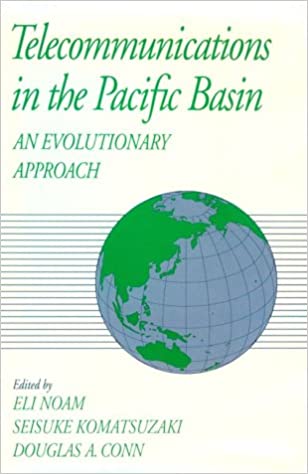
Telecommunications in the Pacific Basin: An Evolutionary Approach
Although telecommunications are in a state of constant change throughout the world, nowhere have the transformations advanced further, faster and in more interesting ways than in the Pacific Basin. This change is closely linked to the more general progress of the electronic sector in the region which has moved forward at an incredible pace as well as the region’s important need for telecommunications services based on its geographic distance from the rest of the industrialized world. Telecommunications in the Pacific Basin emphasizes the economic, regulatory, and social change caused by technological evolution, marketplace developments and institutional reorganization. The contributors discuss the evolution of telecommunication networks, compare deregulation policies in different countries, and analyze public and private cooperation in international informatics. This comprehensive and essential analysis evolves around a multi-stage evolutionary model of public telecommunications networks. It will be of interest to students and professionals in the areas of communications, economics, regulatory law, telecommunications engineering, media, and political science.
1993

The International Market in Film and Television Programs
The worldwide expansion of television and other video media has vastly increased the demand for programs and encouraged their international trade. Information flows have become major economic transactions and as such they deserve economists attention. This book seeks to examine the economic forces in film and TV trade, look at their impact on distribution channels, programming mixes, national policies, and prices. The book also addresses questions relating to global trade barriers: To what extent is the international market competitive?
1992
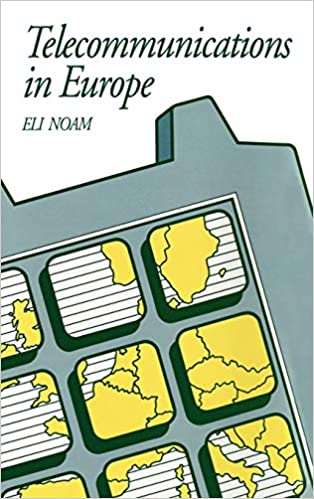
Telecommunications represents one of the largest high technology equipment and service industries in the world. Today there is growing support within the telecommunications industry for competition domestically and in world trade which is directly at odds with its distinctive political tradition of monopoly provision and minimally competitive international trade practices. This raises major questions, both for emerging public policy and for theorists concerned with the making of public policy. This particularly true for Europe, the focus of this study, where the reform of the telecommunications sector has proven one of the most vexing issues confronting the unification of the European Common Market. Noam’s book is the first major attempt to address the complicated economic and policy issues of telecommunications in Europe. He provides a thorough discussion of the evolution of central telephone networks, equipment supply, new value-added networks, and new telecommunications-related services within the framework of a detailed country by country analysis. This highly accessible and comprehensive study will be of interest to students and professionals in the areas of communications, economics, and political science.
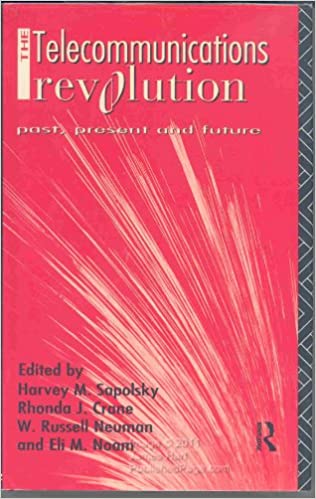
The Telecommunications Revolution: Past, Present and Future
This book charts the global restructuring of telecommunications industries away from the monopoly structures of the past towards increased competition, deregulation and privatization. The book’s authors are international policy-makers and scholars, who examine the regulatory environment within a theoretical and historical context. The book looks at the roots of regulatory and legislative changes by discussing individually the countries at the forefront of the revolution: the UK, France, Germany, Japan and the United States. It examines the impact of new technology for consequences of change in trade and government policies. (First Printing)
1991

Like its companion volume, Telecommunications in Europe, this book deals with the evolution of powerful monopoly institutions in the communications field–the public broadcasters–and the dramatic changes that took place in the late 1980s throughout Europe, and transformed the media landscape.
It provides a comprehensive view of European broadcasting systems, using the perspective of economics and policy analysis. The introductory part offers a framework for understanding media and the forces of change affecting them. The main section is a unique series of chapters covering the broadcast
and cable television systems of almost thirty European countries.
1990
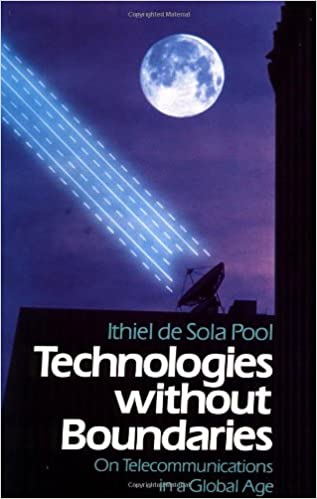
Technologies without Boundaries
Editor for Ithiel de Sola Pool (posthumously)
At the time of his death in 1984, Ithiel de Sola Pool had almost completed this manuscript. Edited into an elegant synthesis of technology, history, politics, and economics by Professor Eli Noam of Columbia University, this is the intellectual legacy of one of the 20th centuries wisest social critics. The book foresees dramatic changes that will revolutionize culture and society. Because distance no longer places a significant economic burden on communications, there will be complex changes in the spacial patterns of human settlements. There will be threats to national sovereignty and social and political cohesion. What will it mean to the effective functioning of democratic societies, Pool asks, if the influence of the mass media weakens and citizens can no longer agree on a common agenda of problems, let alone on solutions to those problems?
1989
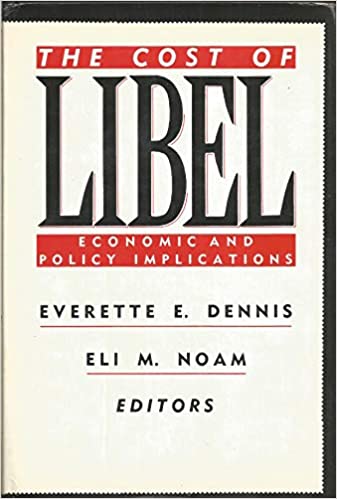
The Cost of Libel: Economic and Policy Implications
Twenty years after the landmark Supreme Court decision handed down in New York Times v. Sullivan extended constitutional protections to the media, the issue of libel litigation has again fallen under intense scrutiny. Other than generalized observations of the chilling effect of libel rules and the high cost of litigation, there has been little examination of libel issues from an economic perspective. This book seeks to fill that gap, by bringing together studies from experts in academia, the bar, the media, and public interest organizations. The book seeks to strike a balance between the rights of privacy and the freedom of the press. It is of great interest to students as well as the professional audience of newspaper and book publishers, journalists, and broadcasters.
1988
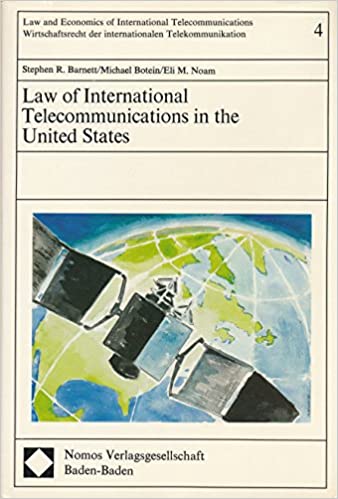
Law of International Telecommunications in the United States
The traditional system of international telecommunications is undergoing fundamental changes caused by new technologies and new public policies on the national and international levels. The legal and economic issues underlying this process of privatization, deregulation, and re-regulation are the subject of studies around the world. This book analyzes the interface of national and international telecommunications systems, it deals with point-to-point communications, broadcasting, and the new media.
1986
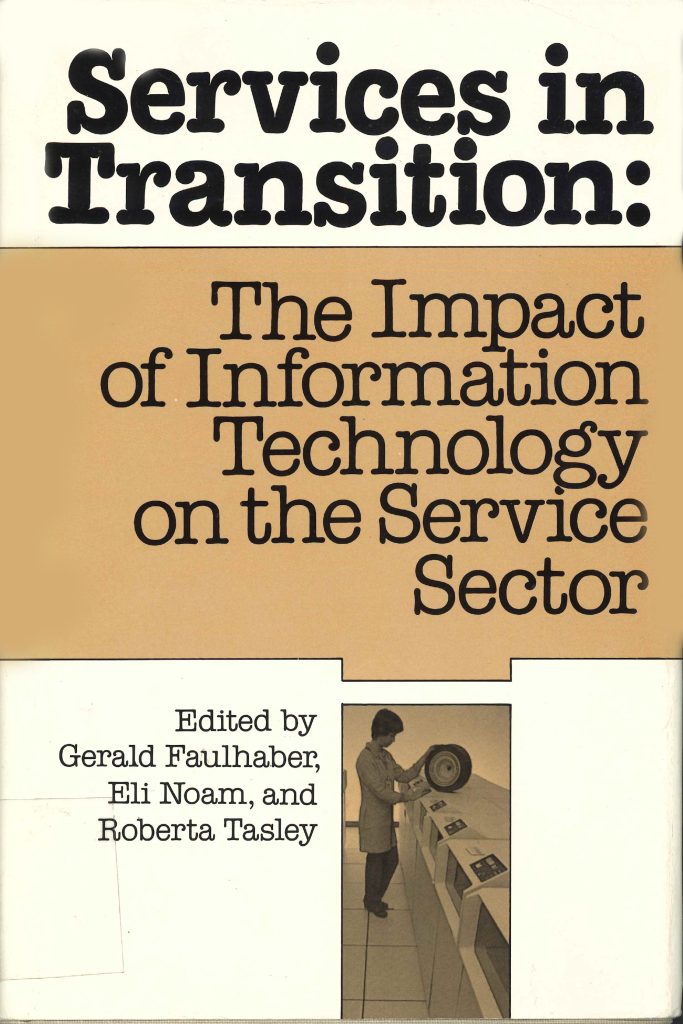
Services in Transition: The Impact of Information Technology on the Service Sector
Two simultaneous revolutions are shaking the American business community: the extraordinary boom in IT technology, and the service sector’s rapidly growing share of the gross national product. What implications do these trends have on the overall economic picture, both national and internationally? What does the future hold for a marriage between technology and services? Will we witness major demographic population shifts comparable to those accompanying the Industrial Revolution? This book offers a probing analysis of the interaction between technology and the service sector.
1985
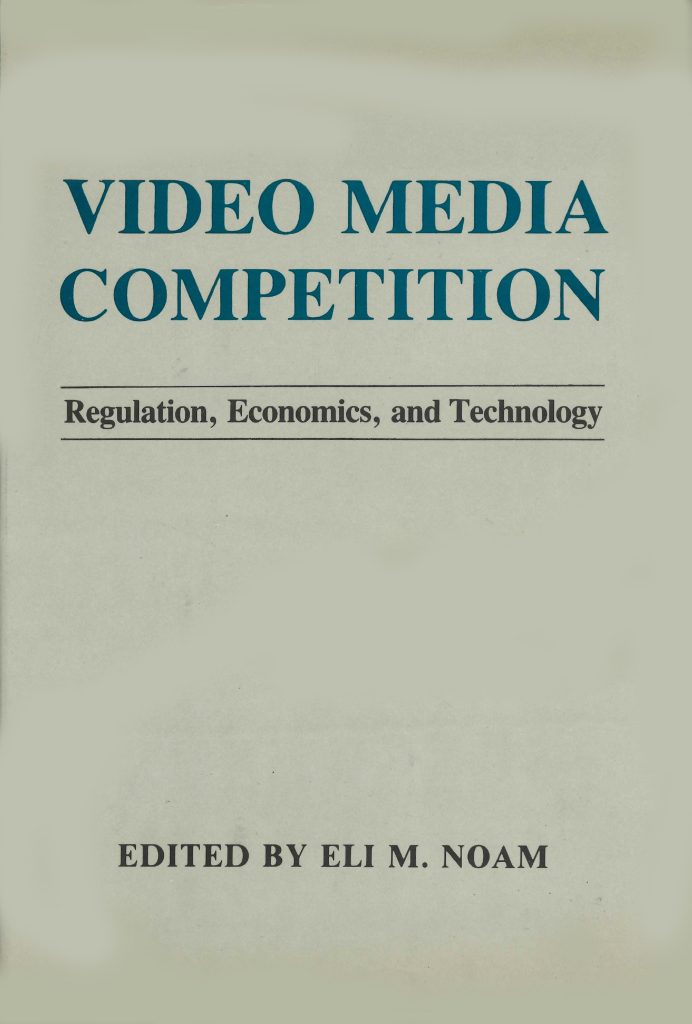
Video Media Competition: Regulation, Economics, and Technology
Rapid technological change, entrepreneurial initiative, and new government regulatory polices are dramatically transforming the structure and function of American Television. These changes have led to increased competition among conventional broadcasting, cable TV, and satellite transmission, and a subsequent increase in government regulation of these media. This book provides a series of unique empirical and regulatory studies that go beyond rhetoric and investigates reality.
1983
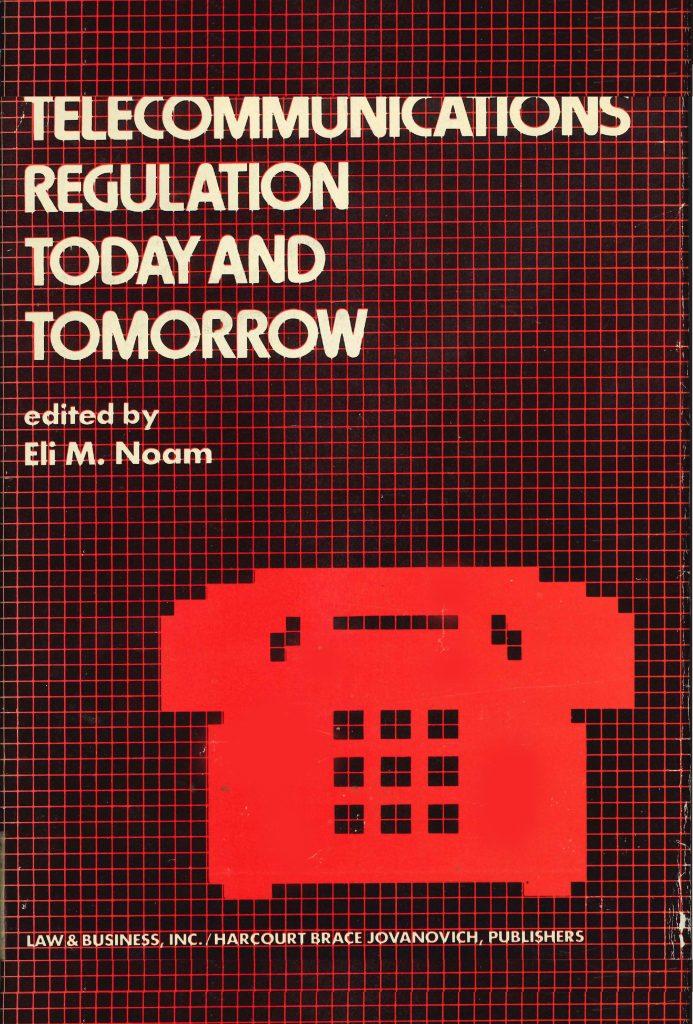
Telecommunications Regulation: Today and Tomorrow
With the break-up of the Bell System, telecommunications is rapidly changing from a rigidly-regulated, monopolistic industry to a highly competitive one. In this book, a team of economic, regulatory and legal experts examine what lies ahead. The book explores the changing roles of the Federal Communications Commission and state public service commissions, the new roles of AT&T and its local operating companies, the future competition among communications networks, telephone and cable television, and the effect of deregulation on the charges, costs and subsidies of local television rates.
